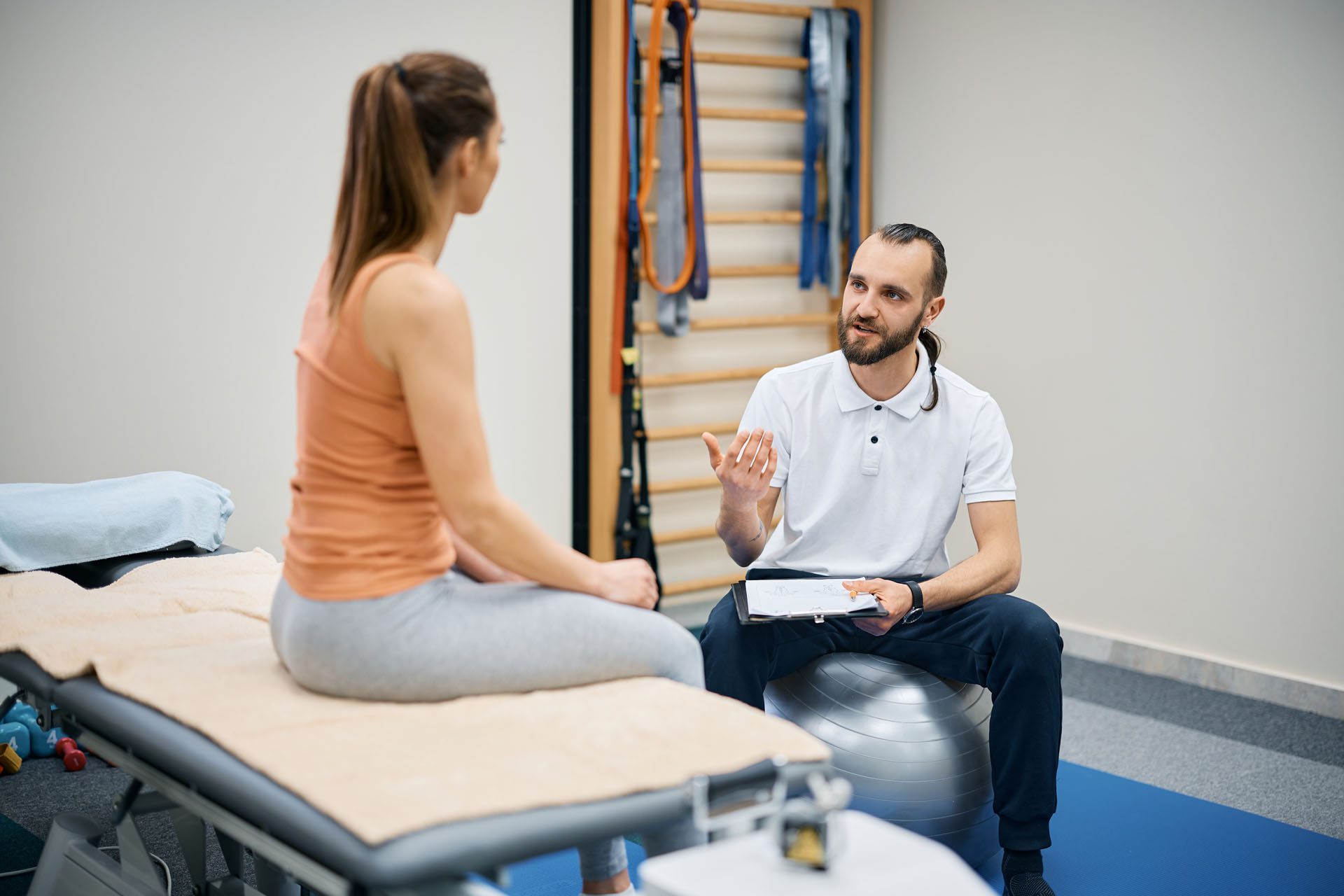ChiroMed Sports Injury Prevention and Integrated Care

Preventing Sports Injuries through Integrated Care at ChiroMed
In the modern era of health, injury prevention is not just about treating symptoms after they arise—it’s about building systems of resilience, joint integrity, neuromuscular coordination, and metabolic support. At ChiroMed – Integrated Medicine, we believe that preventing sports injuries is as much about holistic wellness as it is about structural adjustments.
In this article, we outline a multifaceted prevention strategy and demonstrate how ChiroMed’s integrated services—chiropractic, acupuncture, nutrition, rehabilitation, naturopathy, and nurse practitioner care—fit into that system.
Why Sports Injuries Occur: A Systems View
Before prescribing prevention strategies, it’s helpful to understand the root drivers behind injuries.
1. Cumulative Micro-Stress & Tissue Fatigue
Most injuries do not occur without warning. They result from repeated microtrauma—small stresses that exceed the tissue’s repair capacity—especially when recovery is neglected.
2. Faulty Movement Mechanics & Compensation
If an athlete has restricted mobility in one joint (say the ankle or hip), that restriction forces neighboring joints to compensate. Over time, those compensations can lead to overloading and injury.
3. Muscle Imbalances and Weak Stabilizers
When primary movers are strong but stabilizing muscles (such as the core, glute medius, and scapular stabilizers) are underdeveloped, the joints become vulnerable during dynamic and unpredictable sports movements.
4. Neuromuscular Control & Proprioception Deficits
Speed, agility, and reaction depend on precise neural feedback. If proprioceptive systems are undertrained, the body may misjudge loads or positions, thereby increasing the risk of injury.
5. Poor Recovery, Inflammation, and Nutritional Gaps
Without adequate rest, sleep, hydration, and nutrition, tissues remain in a vulnerable, low-reserve state. Metabolic stress and inflammation reduce the threshold for injury.
The Core Prevention Framework
Below are the key pillars ChiroMed emphasizes in its injury-prevention model:
Warm-Up, Mobility & Activation
A dynamic warm-up primes the neuromuscular system, enhances joint lubrication, and activates stabilizer muscles. Mobility drills (ankle, hip, thoracic) ensure that joints are ready for the full range of motion before stress.
Technique, Movement Quality & Feedback
ChiroMed clinicians and rehabilitation therapists review and coach movement, including squat mechanics, jump landings, cutting motions, and shoulder throws. Faults (valgus knees, shoulder compensation) are corrected early.
Balanced Strength, Stability & Endurance
Prevention includes training:
- Local stabilizer muscles (deep core, rotator cuff, hip stabilizers)
- Global movers (squats, lunges, presses)
- Endurance and eccentric control
- Flexibility/mobility maintenance
This balance avoids overdevelopment of one muscle group at the expense of its antagonist.
Periodization, Load Management & Monitoring
ChiroMed advocates for cycling between high-intensity, moderate, and recovery phases. Training loads (volume and intensity) are tracked, and signs of excessive fatigue or stress trigger adjustments to the program.
Recovery, Nutrition & Regenerative Support
Multi-modal recovery matters: sleep hygiene, protein and micronutrient support, hydration, anti-inflammatory diet, metabolic optimization. Interventions such as acupuncture, soft-tissue therapies, and active rest help tissues recover more quickly.
How ChiroMed’s Integrated Services Support Prevention
ChiroMed’s strength lies in bringing multiple modalities under one roof. Here’s how each service can contribute to preventing sports injuries:
Chiropractic & Structural Alignment
Chiropractic adjustments restore joint mobility and alignment, which helps redistribute forces appropriately. When joints move well, soft tissues and neuromuscular systems operate more efficiently.
Acupuncture & Energetic Regulation
By improving blood flow, reducing inflammation, and modulating neural signals, acupuncture helps reduce microtrauma and supports the body’s healing environment.
Naturopathic Medicine & Functional Evaluations
ChiroMed’s naturopathic practitioners assess metabolic, endocrine, and inflammatory markers. Correcting deficiencies, optimizing hormones, and reducing systemic stress form a foundation for strong tissues.
Nutrition Counseling & Metabolic Support
Diet, supplements, and nutritional strategies can enhance collagen synthesis, reduce oxidative stress, and support recovery. ChiroMed’s nutrition services integrate with training cycles to ensure tissues have the necessary building blocks.
Rehabilitation/Physical Therapy
Rehab specialists help correct movement imbalances, deliver proprioceptive training, and prescribe corrective exercise. The structure from chiropractic care and the movement retraining from PT are synergistic.
Nurse Practitioner & Clinical Oversight
Having NP oversight allows ChiroMed to manage systemic health factors—such as sleep, inflammation, hormone balance, and medical conditions—that influence injury risk. This lets care extend beyond biomechanics into whole-body wellness.
Ongoing Monitoring & Preventive Visits
Even when an athlete feels well, periodic evaluations catch small dysfunctions early—before they manifest as pain. Maintenance visits enable ChiroMed to proactively tune the system.
Sample Preventive Protocol at ChiroMed
Here’s a step-by-step sketch of how ChiroMed might implement a prevention plan for athletes or active clients:
- Comprehensive Assessment & Baseline Testing
- Motion analysis, joint screening, and strength asymmetries
- Lab panels: inflammation markers, vitamin/hormone levels
- Functional evaluation of posture, gait, and stability
- Movement Retraining & Corrective Sequencing
- Address deficits: hip mobility, glute activation, scapular control
- Technique refinement for sport-specific movements
- Strength & Conditioning Program
- Phased training with stabilization, power, and endurance
- Emphasis on symmetry, control, and functional transitions
- Scheduled Structural & Maintenance Therapies
- Chiropractic adjustments, acupuncture, soft-tissue work
- Infrastructure to restore alignment through training phases
- Recovery & Regeneration Modalities
- Active recovery, contrast therapy, massage, and acupuncture
- Nutritional support, hydration, sleep strategies
- Ongoing Monitoring & Feedback
- Use biometrics, movement data, and subjective fatigue
- Adjust training loads, therapies, and rest days accordingly
Over time, the system becomes more robust, with fewer breakdowns, improved performance, and reduced risk.
Why ChiroMed Is Well Positioned for Prevention
- Comprehensive Care Under One Roof
Unlike isolated practices, ChiroMed integrates chiropractic, acupuncture, rehab, nutrition, and NP care, making prevention seamless rather than fragmented. chiromed.com+1 - Local El Paso Presence
The El Paso branch (11860 Vista Del Sol, Suite 128) means athletes and community members can access integrated care in their backyard. chiromed.com - Experienced, Multi-disciplinary Team
ChiroMed’s model encourages collaboration among chiropractors, therapists, nurses, and nutritionists, working together to reduce injury risk in a holistic manner. chiromed.com - Patient-Centered & Root-Cause Focus
The mission statement of ChiroMed emphasizes addressing root causes, not just symptom suppression. chiromed.com - Preventive Philosophy Built In
Their website already emphasizes preventive care, integrated medicine, and ongoing therapy—not just reactive treatment. chiromed.com
Conclusion
Preventing sports injuries is not about luck or reactive fixes. It demands a structured system: warm-up, movement correction, balanced conditioning, recovery, and structural integrity. ChiroMed’s integrated medicine model offers a powerful platform to deliver exactly that—combining chiropractic, acupuncture, nutrition, rehabilitation, and medical oversight into a cohesive prevention engine.
If you want to stay active, resilient, and injury-free, ChiroMed can be your partner in proactive care. Reach out for a preventive assessment, and let us build your system of resilience together.
References
Bayfront Health. (n.d.). Guide to sports injury prevention.
Children’s Hospital of Philadelphia. (n.d.). Tips to prevent sports injuries in youth athletes.
Dallas Accident & Injury Rehab. (n.d.). Integrating chiropractic expertise and holistic sports medicine for enhanced athletic well-being.
Emery, C. A., & Meeuwisse, W. H. (2008). Injury prevention in young athletes. Clinical Journal of Sport Medicine, 18(2), 102–108. https://pmc.ncbi.nlm.nih.gov/articles/PMC2465167.
Evolved Health Chiropractic. (n.d.). Preventing sports injuries: The role of chiropractic in injury prevention.
First Physio Plus. (n.d.). Preventing sports injuries.
Fremont Chiropractic. (n.d.). Chiropractic approaches to treating sports injuries efficiently.
Garden State Pain. (n.d.). Preventing sports injuries in teens: Tips for a safe and fun season.
Garmon Chiropractic. (n.d.). Chiropractic care for sports injuries: Recovery and prevention.
GPOA. (n.d.). The right gear matters: Choosing equipment to prevent sports injuries.
Hopkins Medicine. (n.d.). Sports safety.
LI Spine Med. (2024). 10 tips for preventing sports injuries.
Mount Sinai. (n.d.). Sports injury prevention.
Nationwide Children’s Hospital. (n.d.). Preventing sports injuries.
Nicklaus Children’s Hospital. (n.d.). Sports injury prevention.
Premier Injury Clinics of DFW. (n.d.). Guide to preventing sports injuries.
PWR Physio. (n.d.). Understanding sports injuries: Prevention and recovery.
Walker Physical Therapy. (n.d.). Preventing sports injuries: Tips from a physical therapist.
Young Chiropractic. (n.d.). The role of chiropractic in sports performance and injury prevention.

